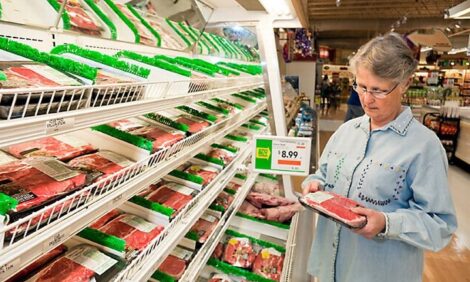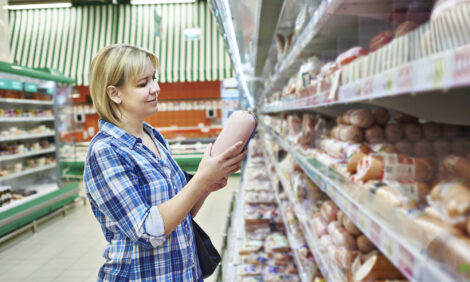



Challenges of Supplying Quality Turkey Meat to Meet Global Demand for Food
A look at past, present and future supply and demand of turkey meat by Richard Hutchinson of Aviagen Turkeys. Jackie Linden, senior editor of ThePoultrySite, reports from the Temperton Fellowship presentation in London in June 2011.The turkey business may have changed since Richard Hutchinson started his career in turkey production 35 years ago but, now having reached the position of Director for Sales and Marketing at Aviagen Turkeys, he continues to look forward with optimism. He opened his presentation to the Temperton Fellowship saying: "I see many opportunities for turkey meat going forward."
Background
Originally, the turkey market in the UK centred on whole birds for the Christmas and Easter markets, and for Thanksgiving in the US. In the mid-1970s, it was Italy that dominated turkey production in Europe but the US led the way for the industry, Mr Hutchinson said.
By 2010, output had increased dramatically in Germany and overtook Italy, while production has increased also in France, which now produces most turkey meat in the EU. Growth in the UK has been more modest.
In terms of world markets, US is way ahead, while Poland, Brazil and Canada, hardly present in the 1970s, are now making a significant contribution to global turkey meat supply. The situation is somewhat volatile in the US and output has fallen from its peak in 2008, while output from Brazil rose steadily between 1999 and 2008, based mainly on export growth.
Not only has turkey met production shown a general and modest upward trend in these countries, but killing weights have also tended to rise.
Average turkey meat consumption varies widely between countries. Mr Hutchinson forecasts only slow growth in uptake on those developed countries where total meat production is already more than 80kg per capita. However, he sees good potential where meat consumption is 50 to 60kg, such as Russia and China.
Nutritional Value of Turkey Meat
In a world where consumers are always looking of a healthy option, turkey has many advantages, said Mr Hutchinson. He highlighted particularly that the meat is low in both fat and calories, high in protein and contributes important vitamins and minerals to the diet. At the same time, turkey is a very versatile meat with its mild flavour and suitability to a range of cooking styles. And last but not least, turkey meat represents good value for money.
Objectives of the Primary Breeder
Mr Hutchinson said that the objective of the primary breeder is to operate breeding programmes that ensure selection is made in a balanced way for a range of health, fitness and production traits. He added that extreme care is taken to make sustainable, predictable and consistent year-on-year progress in all traits to satisfy the customers' needs.
He stressed this requires a balanced breeding programme and significant investment in technology and research.
It is constant investment in breeding programmes the ensures genetic progress, he said, giving examples of the evolution of FCR selection, the design of water stations and leg strength improvements.
Showing the range of both male and female weights required in various countries, Mr Hutchinson demonstrated that no one turkey will meet the requirements of all the markets. Most markets are served with heavy or heavy-medium strains.
Optimising Breast Meat Production
The aim is to optimise the value of the whole carcass, Mr Hutchinson explained. This means achieving a balance between the breast or white meat that is favoured in many markets, with the dark meat. The breast contributes around 26 to 28 per cent of the carcass weight, yet it contributes around 60 to 70 per cent of the carcass value.
The breast muscle develops mainly during the period of 12 to 25 weeks of age, and especially between 15 and 20 weeks, so the killing age largely dictates the bird's carcass composition. A wide range of factors impact breast meat yield in turkeys, especially feeding/nutrition and the physical environment – from incubation and stocking density to temperature, season and ventilation.
It is vital to get all these areas right, said Mr Hutchinson, especially in developing markets.
World Turkey Meat Markets and Potential Future Growth
Reviewing the trends in turkey meat production and consumption around the world from the US and Brazil, through the EU nations and to North Africa and the Middle East, Mr Hutchinson showed that there is considerable potential for growth in the global market. It is likely that progress can most easily be made in those countries of the EU where turkey consumption is still low as well as in its neighbours in North Africa, the Middle East, Turkey, Russia and Ukraine.
Increasing consumption could be achieved by strong marketing, Mr Hutchinson said, focussing on the product's strengths – its healthy and nutritional profile and versatility. Also important, he stressed, is to make the product attractive to the chosen demographic by developing new products and increasing consumer awareness of the meat's possibilities.
In his summing up, Mr Hutchinson said that the turkey meat market has many advantages to develop for the future, as performance levels continue to improve and investments are made in processing and product development.
He added that for consumers, turkey meat offers a healthy alternative to other meats and it suits cuisines all around the world.
"Turkey is truly the meat of the future," Mr Hutchinson concluded.
The Temperton Fellowship was established to commemorate the contribution of Dr Harold Temperton, Director of the National Institute of Poultry Husbandry at Harper Adams University College from 1951 to 1974. Chairman of the Fellowship is Peel Holroyd.
July 2011









